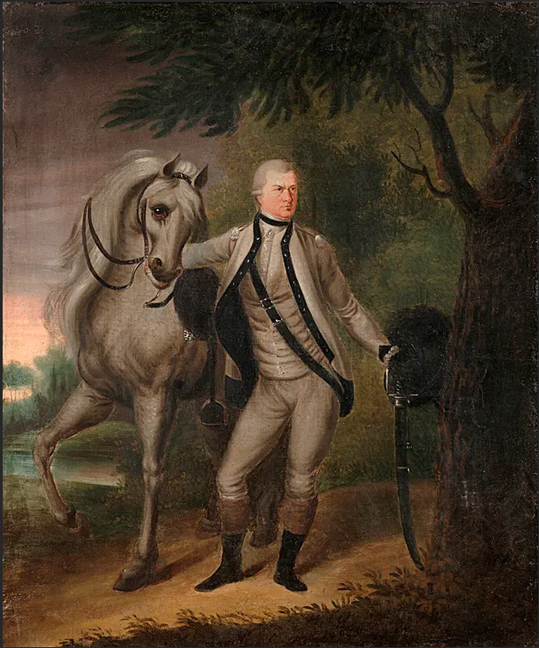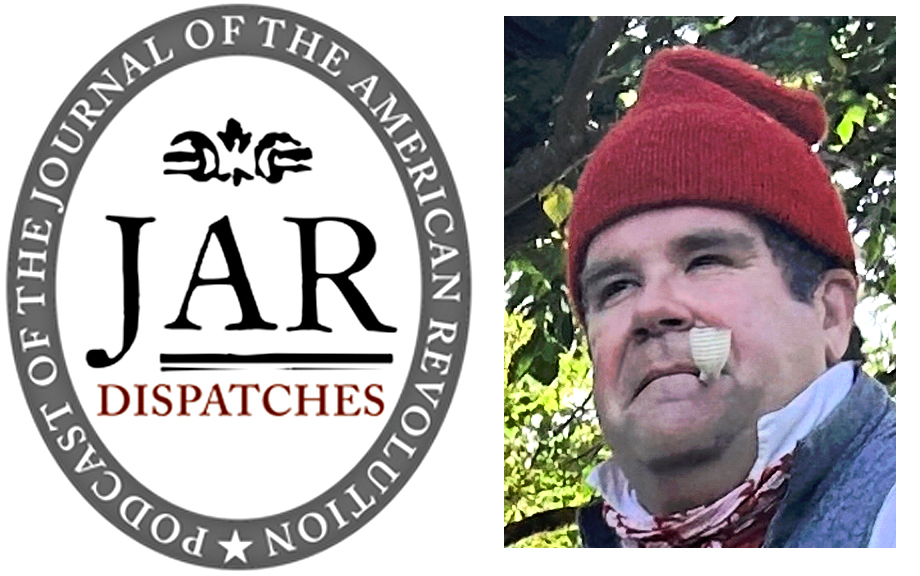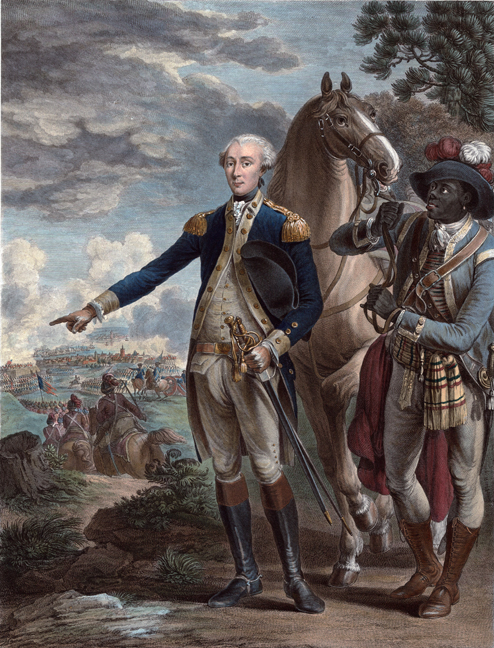Just weeks after war broke out at Lexington and Concord, Ethan Allen and Benedict Arnold, working in grudging consort,captured Fort Ticonderoga on Lake Champlain, as well as the settlement of Skenesborough (now Whitehall) at the southern end of the lake. Under orders from Arnold, Eleazer Oswald also captured a small vessel there. Oswald reported: “We set sail from Skenesborough [for Fort Ticonderoga] in a schooner belonging to Major [Philip] Skene, which we christened Liberty.”[1]
By the time Liberty arrived at Fort Ticonderoga disagreements regarding command were growing heated between Arnold and Allen and his Green Mountain Boys. In addition to arguing with his ostensible comrades-in-arms, Arnold worried about solidifying American control of strategic Lake Champlain. To gain that control, and to get away from Allen and the Boys, Arnold organized an expedition, consisting of Liberty and a number of bateaux, against the British garrison at St. Johns at the lake’s northern end. There they “surprised & took a Sargeant & his party of 12 Men, the King’s Sloop of about 70 Tons with 2 brass 6-pounders & 7 men.”[2] thus capturing the only British warship on Lake Champlain. Upon his return to Ticonderoga Arnold recognized and wrote that, with their fleet of two small armed vessels, the Americans were now “masters of the Lake”[3] with himself in command.
After the seizure of Fort Ticonderoga, followed by Benedict Arnold’s St. John’s Raid on May 18, 1775, American control of Lake Champlain was secure. Nonetheless, Arnold rightly feared that the British would somehow find a way to transport troops up Lake Champlain to recapture the fort.[4] He also understood that maintaining naval superiority on the lake was by far the most effective way to prevent that from happening. With that in mind, Arnold brought his fleet back to St. John’s to determine if the British intended to build boats to contest his new-foundcommand of the water.
From June 6 thru 10, Arnold sailed to Isle aux Noix to reconnoiter the St. John’s shipyard, monitor British activities and make sure they were not preparing vessels to retake Fort Ticonderoga.[5] His fleet consisted of Liberty, the sloop captured at St. John’s which had been renamed Enterprise, and several smaller vessels, all recently captured.
The following set of partial orders was discovered by the author in the Hall Park McCullough Collection held in the Special Collections Library at the University of Vermont.[6] Unfortunately, at least one or more pages of these orders are missing. We believe the recipient of Arnold’s orders was Capt. Isaac Mathues. He commanded the Liberty from May 20 to June 25, 1775.[7] Arnold’s orders to him were very explicit:[8]
. . . within 5miles StJohns The three large Battoes to go on as far as the Ile Anore,[9] & the Smaller, Yawl, or Battoe to go a head, about One Mile the canoe about two Miles a head of her & If they Discover the enemy to Return and Acquaint the Batoes who are to keep Close in with The Western Shore & If the Enemy Given Chase to the Canoe, they Are to put On Shore & hide themselves until the enemy Comes [and then attack them[10] at Night let the Cannoe go on, as far or Near to StJohns & Discover all they can____ Send the Battoe or Small Boat back this Night & let the Whole return Tomorrow_____ or the first Fair Wind___ there is a small house One Mile this side StJohn’s Where Our People can very likely get Intillgence____ If any Inquiry is made they should be Informed Our Number is five or Six hundred
On Board The Enterprise 6 June 1775
Benedt. Arnold Coll
& Commander in Chief
On the bottom left in a different hand is written, “This is part of a letter of instructions to Capt Wells of Hebron, Connt. from a relative of whom I recd. it. A.C.W.” This notation by an unknown memorabilia collector (A. C. W) who took the word of the person he acquired it from is certainly incorrect. Captain Wells of Hebron, Connecticut was never anywhere close to Lake Champlain during the American Revolution.[11]

Arnold’s orders are clear and self-explanatory. The reconnoiter apparently went as planned with no evidence of major ship building activity, but the British were strengthening the defenses of Fort St. John. The Liberty and Enterprise returned to Crown Point on June 10.[12]
As historians, we are often tempted to over interpret simple documents like this. There are three observations to be made:
1. While in command, Arnold did everything he could to ensure the British did not mount a campaign to retake Fort Ticonderoga.
2. Arnold’s instructions to his men sent to gather intelligence at the “small house” clearly indicate that he understood the value and use of misinformation to deter the British; there were far fewer than “five or Six hundred” at Fort Ticonderoga.”
3. Arnold’s signature as “Commander-In-Chief” was true. He was indeed, at that moment commander-in-chief on Lake Champlain.
This was Arnold’s last trip to St. John’s in 1775. On June 25 he was relieved of his command and left the Champlain Valley.
Author’s Note
May 18, 2020 marks the 245th Anniversary of the St. John’s Raid, one of the earliest actions in what would become a major theater, in both land and water-borne fighting, during the American Revolution. A major artifact from that years-long conflict was recently discovered: the Spitfire,an American gunboat, part of Arnold’s 1776 fleet, which was sunk by her crew during the nighttime retreat following the Battle of Valcour Island. We urge everyone to join the effort to preserve this remarkable connection to the American Revolution. For additional information, please contact the Lake Champlain Maritime Museum or the Naval History and Heritage Command.
Acknowledgments: The author gratefully acknowledges the long-standing suggestions, comments, encouragement, and support of James L Nelson, Art Cohn, James Kirby Martin, Steve Darley, Nicole Russell, Richard Hibbert, and Russell Bellico. We also thank The Special Collections Library of the University of Vermont for their assistance and Ms. M. E. Foote of the Hebron Historical Society.
[1]William Bell Clark, ed. Naval Documents of the American Revolution (Washington, DC: Government Printing Office, 1964), 1: 312.
[4]James Kirby Martin, Benedict Arnold: Revolutionary Hero (New York: New York University p Press, 1977), 74, 77; James L. Nelson, Benedict Arnold’s Navy (Camden, ME: International Marine, 2006), xv, 41.
[5]“Continental Army (Lake Champlain) Schooner Liberty,” American War of Independence at Sea, awiatsea.com/cona/Continental%20Army%20(Lake%20Champlain)%20Schooner%20Liberty%20%5bSloan%20Mathues%20Stewart%20Premier%20Premier%5d.html.
[6]University of Vermont Special Collections, Hall Park McCullough Finding Guide by Graffagnino, J. Kevin, Curator Wilbur Collection “Hall Park McCullough, Americana Collector, 1872-1966”, January 1988 Printed at Meriden Steinhour Press, Lunenberg, VT. UVM Special Collections Library call number Z1207, H34, 1988- Arnold’s orders are document 183.
[7]Benedict Arnold to the Massachusetts Committee of Safety, Cambridge May 23, 1775, Clark, ed. Naval Documents, 1: 512.
[8]In the eighteenth century, it was common practice to indicate the succeeding page in a letter by placing the first word of the preceding page at the top of the next page. Arnold did this in his orders which comprise at least two pages. To avoid confusion, the duplicate words were omitted from this transcript.
[9]Isle aux Noix, in the Richelieu (Sorrel) River about twelve miles South of the shipyard in St. Johns, Quebec where the British fleet was built and based in 1776.
[10]The phrase “and then attack them” was written above the words “at Night.”
[11]Capt. John H Wells of Hebron Connecticut served during the Revolutionary War in the militia raised in Hebron, Connecticut. Hebron, Connecticut Bicentennial, August 23d to 25th, 1908 (Hebron, CT: published by the Bicentennial Committee, 1910), 52.
[12]“Continental Army (Lake Champlain) Schooner Liberty,” American War of Independence at Sea.








6 Comments
Pip,
This is a nice piece of detective work and I commend you in searching through the voluminous HPM papers at UVM. I spent time there researching Philip Skene and would also recommend the HPM papers at the Bennington Museum where there may be additional information on Arnold. For more on HPM (Hiland Hall’s grandson) and his incredible accumulation of documents, see our just published book The Rebel and the Tory: Ethan Allen, Philip Skene and the Dawn of Vermont, reviewed by Gene Procknow last week for JAR.
Regarding the June 6, 1775 date when Arnold signed himself as C-in-C, note that there appears to have been a continuing power struggle going on between himself and Allen on exactly who was to be in command. On June 10, when Arnold was away, officers at Ft. Ti wrote out a petition on Allen’s behalf asking that the Continental Congress appoint him to lead the Green Mountain Boys. William Gilliland in Willlsboro also wrote and asked that Allen be placed in charge of troops on the lake. See p. 145 for more. GMB or “troops on the lake”? Does either mean a C-in-C role?
Allen and Seth Warner then left Ft. Ti and appeared in Philadelphia on June 23 where they presented the papers. Rather than making the assignment, the Congress chose instead to allow the Green Mountain Boys to elect their own leaders, but, as we know, Allen never received that honor from the Grants’ leaders.
Your point that Arnold was C-in-C on the lake at that moment is accurate, but I would respectfully submit that his assertion must be put into context as Allen was personally arguing for a similar role in Philadelphia. Your find is most interesting as it gives added evidence of the power struggle going on that June. Good job!
PS I forgot to mention I looked for other Arnold documents at the Bennington Museum Archives when I was researching Colonel Wigglesworth’s Diary. I could find nothing. I asked the archivist librarian if there were any other documents related to Arnold and the McCullough papers they held. She confirmed there were not. Also, I carefully searched for Arnold’s documents in the UVM McCullough collection. Other than the letter I mentioned to Arnold, there was nothing.
You’d be interested to know that there is an Arnold entry in the Skene papers at the British Archives. It pertains to Skene’s petition for reimbursement from the British Claims Commission because of losses he experienced at Skenesborough when the rebels took it over. In valuing the property, Arnold provided sworn testimony used by the Commission that he thought Skene’s land was valuable and he had actually thought of establishing a township of his own in the same area (see my book).
Regarding your point that things at Ft. Ti were “convoluted,” that is an understatement! While Allen and Warner were in Philadelphia and Arnold on the north end of the lake, henchman Robert Cochran and others left Ft. Ti and went on a rampage to destroy the courts in Ft. Edward, which is also covered in the book. I agree that Arnold was asserting his command in the context of the lake situation, but cannot escape the impression that usurping Allen, whose men actually threatened to kill him just a short time before, was also in play. Despite his absence, Allen, with the ear of the Congress, remained a strong threat to Arnold trying to assert himself whenever he could.
Hi Pip
Great research to find this important document hidden away in UVM Library. As you say, it is clear evidence of the importance Arnold attached to the necessity of protecting Lake Champlain from the British. Too few writers have recognized this. Hopefully your find will help reinforce that fact. My favorite take away from your discovery. I appreciate your experience of holding the document written by Arnold in your hand.
Thanks for your interesting comments. Your book is on my list to buy and I look forward to reading it with eager anticipation. Respectfully, I would disagree that Arnold’s signature as commander-in-chief had anything to do with his dispute with Ethan Allen. Arnold’s mindset was that he was the commander-in-chief on Lake. Although the Green Mountain Boys were still trying to discredit Arnold, Arnold was the one holding and protecting the Lake and thus Fort TI. Not only could Allen’s men not sail large vessels; but, they were dispersing to go home and plant their crops. Allen was fighting to be commander in name not in reality. The political nuances of that time interval between May and June were both convoluted and bitter. On the other hand, the military situation was under Arnold’s control and relatively stable because the British could not mount an attack on Fort TI simply because the damage Arnold had done at St. John’s apparently couldn’t be quickly corrected. If Carleton had used his brains and got 6-8 Bateaux at St. John’s (instead of strengthening the Fort) he could’ve easily have recaptured Fort TI with a small number of troops. However, this is pure speculation since that isn’t what happened. This is really one of those areas where we can both agree to disagree. Have a great day.
Pip
Hi Gary,
Thanks for your additional comments. I believe Arnold was too preoccupied and busy trying to prevent the British from retaking Fort TI. As I stated earlier, this is an area where we agree to disagree. Be safe out there.
Pip